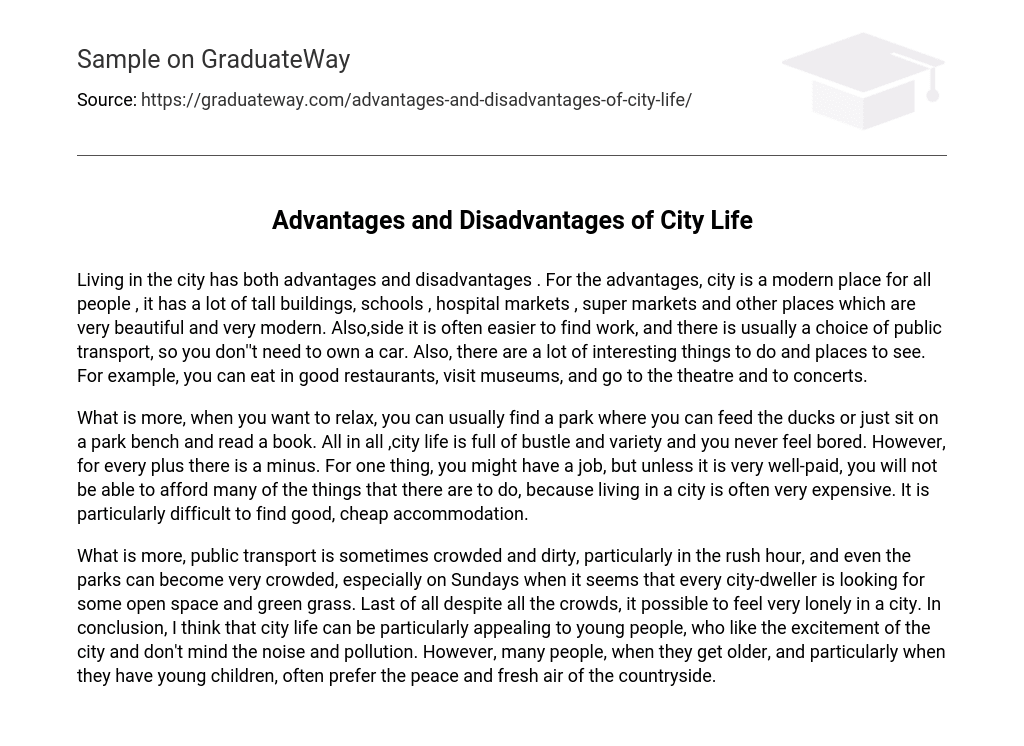Living in the city has its advantages and disadvantages. The positive aspects of cities include their modernity with tall buildings, schools, hospitals, markets, super markets, and other contemporary places. Additionally, finding employment opportunities is generally easier in cities and there are various public transportation options to choose from which eliminates the need for car ownership. Cities also provide a wide range of engaging activities and attractions to explore such as dining at high-quality restaurants, visiting museums, attending theater performances, and enjoying concerts.
Moreover, living in an urban area offers various possibilities for unwinding. You can opt to visit a park and engage in duck-feeding or seek solace on a park bench with a book. The city is always bustling with energy and diversity, ensuring perpetual excitement. However, alongside these advantages come disadvantages too. Despite the abundance of job opportunities, engaging in leisure activities can be arduous if one’s income is insufficient due to the high cost of living. Moreover, finding affordable and satisfactory housing can pose significant challenges.
In addition, public transportation can be crowded and dirty, especially during busy times. Similarly, parks can also become overcrowded, especially on Sundays when city residents look for open spaces and green lawns. Moreover, despite the large number of people, it is possible to feel isolated in a city. In conclusion, I believe that young individuals who enjoy the excitement of city life and are not bothered by noise and pollution may find urban living very appealing. However, as people get older—particularly when they have young children—many often prefer the peace and fresh air found in rural areas.





